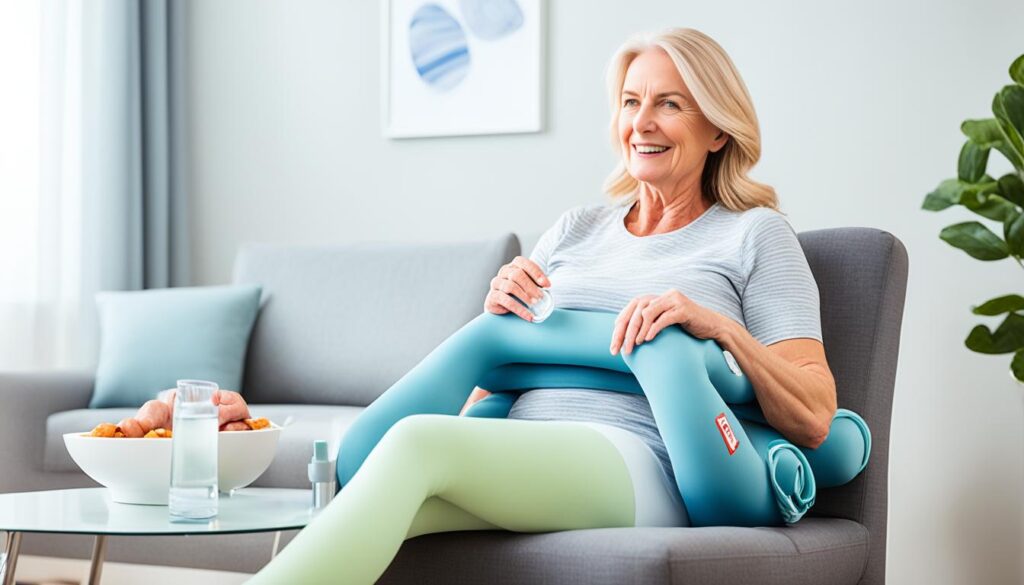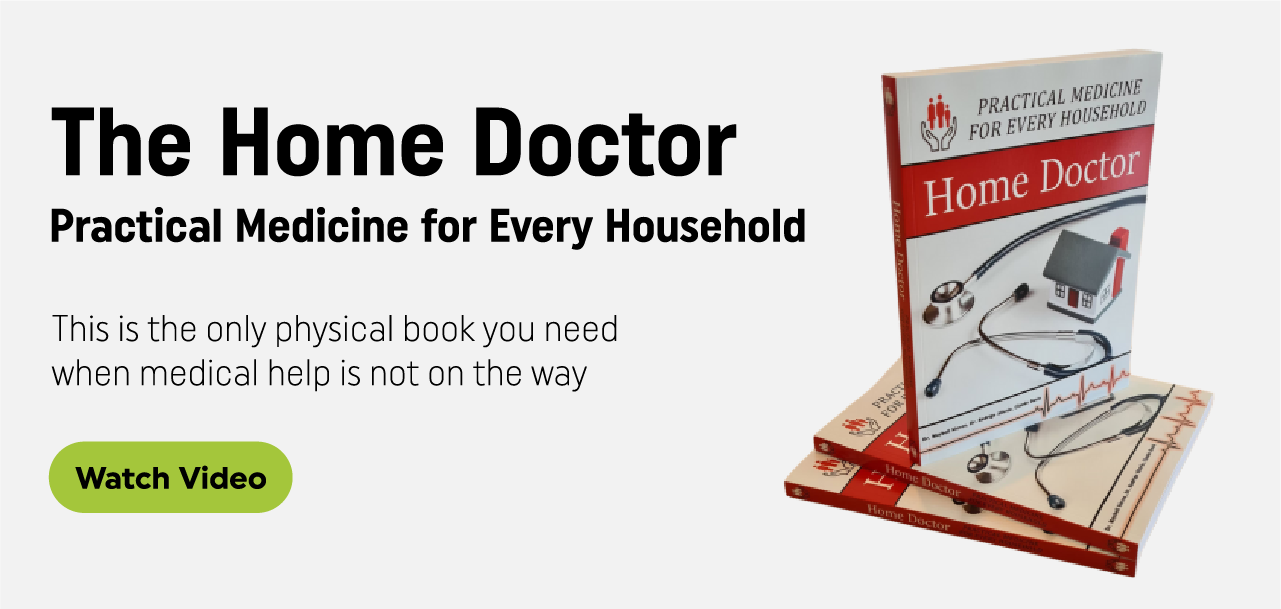Deep vein thrombosis (DVT) is a condition in which a blood clot forms in a vein, typically in the calf or thigh. DVT can be treated at home with a combination of medication and lifestyle changes. Anticoagulant medications, also known as blood thinners, are commonly prescribed to prevent the clot from growing and reduce the risk of further clots. In addition to medication, there are several home remedies and lifestyle changes that can help manage and prevent DVT.
Key Takeaways:
- Anticoagulant medication, such as warfarin, is often prescribed to manage DVT at home.
- Managing symptoms of DVT at home includes wearing compression stockings and elevating the affected leg.
- Lifestyle changes, such as maintaining a healthy weight and staying hydrated, can help prevent DVT from recurring.
- Herbal remedies may have potential benefits in preventing blood clots, but should be discussed with a doctor before use.
- Follow a doctor’s instructions and seek immediate medical attention for any complications or worsening symptoms.
Taking Anticoagulant Medication at Home
Anticoagulant medication, such as warfarin, is often prescribed to manage deep vein thrombosis (DVT) at home. It plays a critical role in preventing the clot from growing and reducing the risk of further clots. Consistency and adherence to the prescribed medication regimen are essential to prevent complications and support effective treatment.
When taking anticoagulant medication at home:
- Stick to the schedule: Take the medication at the same time each day as directed by your doctor.
- Avoid interruptions: Consult with your healthcare professional before making any changes or interruptions in your medication regimen.
- Monitor effectiveness: Regular prothrombin time tests (PT tests) may be necessary to assess the medication’s effectiveness and adjust the dosage if needed.
- Inform healthcare providers: Ensure that all healthcare providers are aware of your use of anticoagulant medications to support safe and coordinated care.
It’s important to take precautions when using anticoagulant medication at home:
- Prevent falls: Anticoagulants can increase the risk of bleeding. Take extra caution to avoid falls or injuries that could lead to bleeding.
- Report missed doses: If you accidentally miss a dose, contact your healthcare provider for guidance on what to do.
- Avoid interactions: Talk to your doctor or pharmacist about potential interactions between anticoagulant medication and other medications or supplements you may be taking.
Remember, always follow your doctor’s guidance to ensure optimal benefits and minimal risks when taking anticoagulant medication at home.
Managing Symptoms at Home
DVT can cause symptoms such as leg pain and swelling. To alleviate these symptoms at home, you can follow these tips:
- Wear graduated compression stockings: These stockings apply gentle pressure to prevent blood from pooling and clotting, relieving leg pain and reducing swelling.
- Elevate the affected leg: By raising the leg above hip level, you can help with reducing swelling.
- Engage in regular walks: Walking regularly throughout the day can improve blood flow to the legs, promoting healing and reducing discomfort.
It’s important to note that certain precautions should be taken to manage DVT symptoms effectively. Avoid taking aspirin and nonsteroidal anti-inflammatory drugs (NSAIDs) unless specifically advised by a doctor, as they can interact with anticoagulants and lead to complications. If you experience any signs of a pulmonary embolism, a life-threatening condition, seek immediate medical attention.

“Wearing graduated compression stockings can help relieve leg pain and reduce swelling in DVT patients.”
Preventing DVT at Home
Along with managing symptoms, lifestyle changes play a crucial role in preventing the recurrence of deep vein thrombosis (DVT). People at higher risk of DVT, such as those who have undergone surgery or have a family history of DVT, can take proactive measures to reduce their risk. Here are some effective ways to prevent DVT at home:
- Quit Smoking: Smoking increases the risk of blood clots and decreases overall blood flow. Quitting smoking is not only beneficial for preventing DVT but also for improving overall health.
- Maintain a Moderate Weight: Obesity and overweight can strain the circulatory system, making it more prone to blood clots. Maintaining a healthy weight through a balanced diet and regular exercise can help reduce the risk of DVT.
- Stay Hydrated: Proper hydration ensures that the blood remains thin and less prone to clotting. Aim to drink an adequate amount of water throughout the day to keep yourself hydrated.
- Avoid Prolonged Immobility: Long periods of sitting or lying down can increase the risk of DVT. If you have a sedentary lifestyle, try to take frequent breaks to move around and stretch your legs. Even simple exercises like leg flexing and ankle rotations can help improve blood circulation.
- Wear Compression Stockings: Compression stockings are specially designed to promote healthy blood flow and prevent blood pooling in the legs. They can be particularly beneficial after surgery or during periods of bed rest. Make sure to follow the proper fitting and usage instructions.
To summarize, taking proactive steps to prevent DVT is essential for individuals at a higher risk. By adopting healthy lifestyle changes such as quitting smoking, maintaining a moderate weight, staying hydrated, avoiding prolonged immobilization, and wearing compression stockings, you can significantly reduce the risk of DVT and promote overall vascular health.

| Lifestyle Changes | Benefits |
|---|---|
| Quit Smoking | Reduces the risk of blood clots and improves overall cardiovascular health. |
| Maintain a Moderate Weight | Reduces strain on the circulatory system and lowers the risk of DVT. |
| Stay Hydrated | Keeps the blood thin and less prone to clotting. |
| Avoid Prolonged Immobility | Improves blood circulation and reduces the risk of blood clots. |
| Wear Compression Stockings | Promotes healthy blood flow and prevents blood pooling in the legs. |
Herbal Remedies for DVT Prevention
While medication is the primary treatment for DVT, some herbs and supplements are believed to have potential benefits in preventing blood clots. Ginger, turmeric, cayenne pepper, and certain vitamins (such as vitamin E and omega-3 fatty acids) have been studied for their potential anti-inflammatory and antiplatelet properties. However, it is important to consult with a doctor before taking any herbal or vitamin supplements, as they can interact with medications and may have varying effects on blood clotting. It is also important to note that the effectiveness of these remedies in preventing DVT has not been conclusively proven through research.
Conclusion
Deep vein thrombosis (DVT) is a serious condition that can be effectively managed and treated at home. By combining medication, home remedies, and lifestyle changes, individuals can take control of their DVT self-treatment and effectively manage the condition.
Anticoagulant medication, such as warfarin, is commonly prescribed to prevent the clot from growing and reduce the risk of further clot formation. This medication should be taken as directed by a doctor, and any missed doses should be reported immediately. Regular prothrombin time tests are necessary to monitor the effectiveness of the medication. It is also crucial to inform all healthcare providers about the use of anticoagulant medications to ensure coordinated care.
Home remedies, such as wearing compression stockings, elevating the affected leg, and engaging in regular exercise, can help manage DVT symptoms and improve blood flow. These simple yet effective strategies can be incorporated into daily routines, providing relief and reducing the risk of complications. Additionally, making lifestyle changes, such as quitting smoking, maintaining a healthy weight, staying hydrated, and avoiding prolonged periods of immobility, can play a crucial role in preventing DVT from recurring.
While herbal remedies and supplements may provide potential benefits in preventing blood clots, it is important to consult with a doctor before incorporating them into a DVT treatment plan. Understanding the potential benefits and potential risks is essential to ensure safe and effective management of DVT at home. Overall, following a doctor’s advice, seeking immediate medical attention for any complications or worsening symptoms, and adhering to prescribed medication and lifestyle changes are key to successfully managing DVT and preventing further complications.


